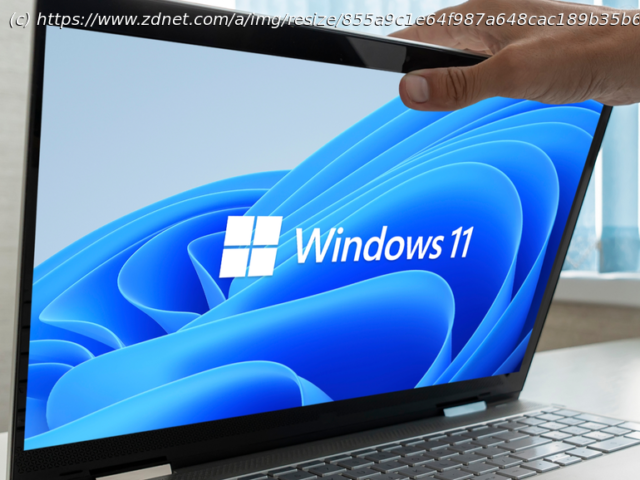For the first time ever, Microsoft is releasing a Windows upgrade that it doesn’t want most of its existing customers to use. But especially on new hardware, Windows 11 offers some serious usability improvements, along with a handful of annoyances.
Microsoft is rolling out a major operating system upgrade this week. It is unlike any Windows upgrade I can remember, and I’ve been covering this beat since the dawn of recorded time. Technically, you can look at Windows 11 and argue that it’s really only a feature update to Windows 10. For Exhibit A, just look at the version string that appears if you open a Command Prompt window: Microsoft Windows [Version 10.0.22000.194] Version 10, you say? Microsoft says that string is there for compatibility reasons, but it follows the exact same format that Windows 10 feature updates follow. Want more proof? Install Windows 11 and you can use any Windows 10 product key to activate that installation. Microsoft confirms this behavior is by design. I could go down a long list of additional reasons why this is, technically, a minor Windows upgrade that’s been assigned a new major version number for marketing purposes. And yet that explanation obscures a more important reality: This version of Windows marks a major hardware transition, with Microsoft drawing a firm line in the silicon and declaring that the majority of current CPUs will be obsolete when Windows 10 support expires in October 2025. For the first time ever, Microsoft is releasing a Windows upgrade that it doesn’t want most of its existing customers to use. By my back-of the envelope calculations, roughly 60% of the 1.3 billion PCs now running Windows 10 will be blocked from upgrading to Windows 11 (although the owners of those PCs can install Windows 11 manually). That finding tracks with the results of a survey of 30 million enterprise PCs by IT asset management company Lansweeper, which estimated that 55% of those PCs would fall short of Microsoft’s hardware requirements It’s also noteworthy that this is the first Windows upgrade in recent memory that isn’t the result of Microsoft responding to a crisis in its installed base. Windows 10, for example, was a response to the market’s wholesale rejection of Windows 8, which was itself Microsoft’s bold but flawed attempt to build an alternative to Apple’s iPad. And then there’s Windows 7, whose prime directive was to clean up the mess that was Windows Vista. In that context, the fact that Windows 11 is a relatively modest refresh to the hugely successful Windows 10 is almost a relief. Indeed, it’s remarkable that Microsoft’s designers have been able to concentrate on the nuts and bolts of Windows in this release instead of having to rebuild the operating system’s foundation for the umpteenth time. This review is based on the final builds Microsoft released as part of the Windows Insider Program. I’ve done upgrades and clean installs on a variety of hardware devices and a few virtual machines, as well as testing Windows 11 on a Surface Pro 8 review unit that I’ve been using for the past week or so. If your hardware passes Microsoft’s requirements and you choose to accept the optional upgrade, here’s what you can expect. For anyone who upgrades to Windows 11 using Windows Update, the experience should be similar to that of installing a Windows 10 feature update. If you choose a clean install, you’ll get a brand-new Setup experience that is much calmer and more understated than the Windows 10 experience, with none of those chirpy-verging-on-grating Cortana prompts. (“A little sign-up here, a touch of Wi-Fi there…” Arrrrgggghhh!) This is what the new Setup looks like. Besides a visual refresh, the redesigned Windows 11 Setup includes several new capabilities. You now get an opportunity to choose a computer name as part of the installation process instead of having a random string of letters and numbers assigned as the computer name. When you sign in with a Microsoft account, you’re also given the choice to copy settings and a list of apps from another device or to set up the new PC using default settings. That’s a choice that owners of mobile devices have been familiar with for ages, but it’s nice to see it available on Windows PCs. On the other side of the ledger, anyone installing Windows 11 Home edition will be disappointed to learn that Setup requires an Internet connection and a Microsoft account. You won’t be able to proceed without either entering an existing Microsoft account address or creating a new one, although you can replace that account with a local account after setup is complete. If you’re setting up Windows 11 Pro or Enterprise, you’ll have the option to create a local account, which is a prerequisite before joining a Windows domain. The Windows 11 installation does an excellent job of supporting password-less sign-in for Microsoft accounts as well as Azure Active Directory logins. On Microsoft Surface and other devices that include an infrared camera, Windows Hello facial recognition offers the easiest sign-in option. The primary backup option in Windows 11 is OneDrive folder syncing, which allows you to save files from the Documents, Desktop, and Pictures folder to a connected OneDrive account. Legacy backup options are no longer accessible from Windows 11 Settings, although they’re still there if you know where to look; the well-hidden features include File History, which copies data files and folders to a local storage device, along with the venerable Windows 7 Backup program.
Home
United States
USA — software Windows 11: Microsoft's biggest minor upgrade ever is all about new hardware






